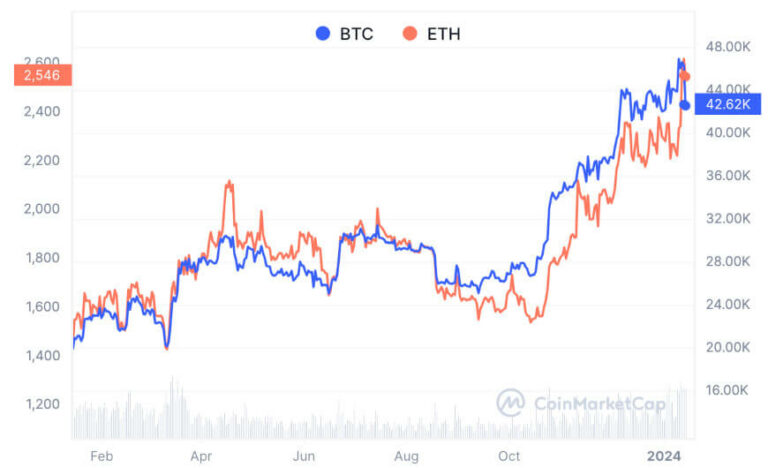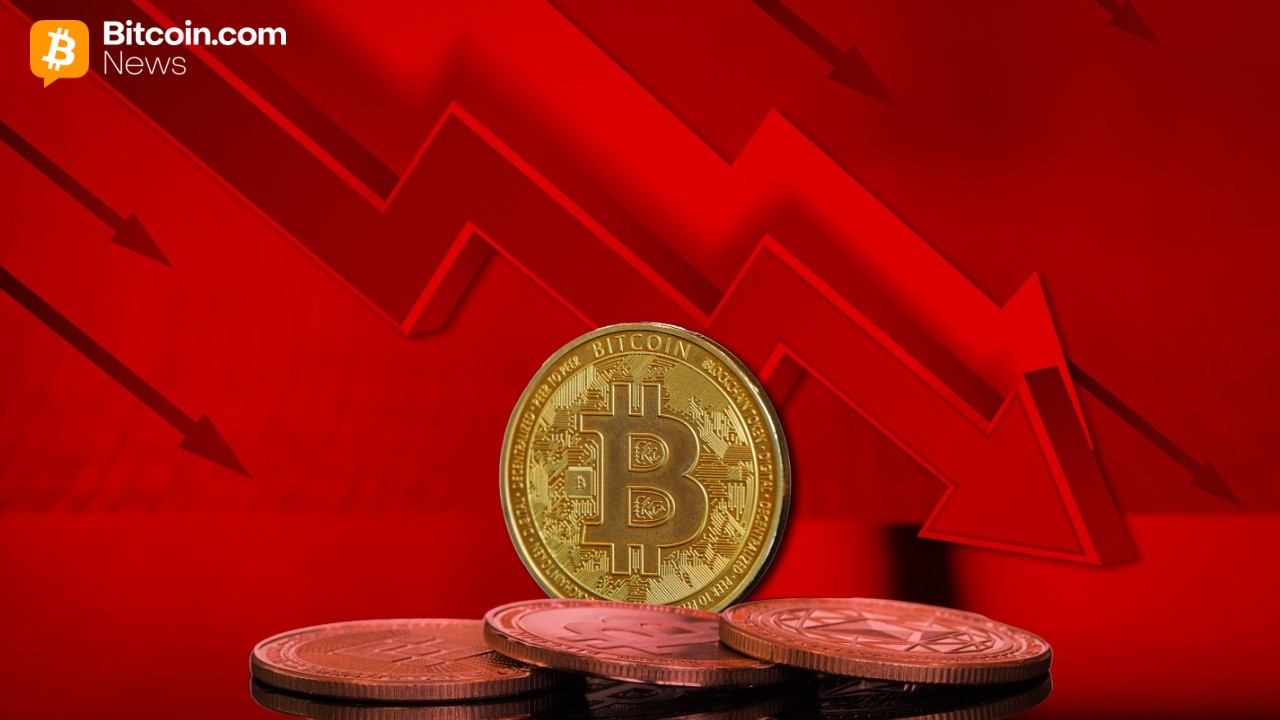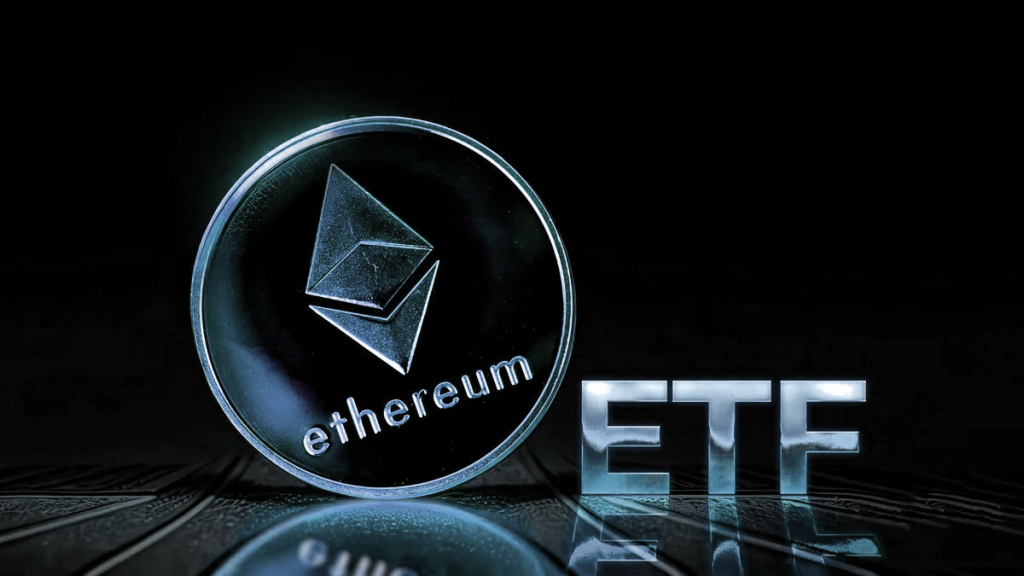Ether And Bitcoin Etf A Comprehensive Exploration
Ether and Bitcoin ETFs are creating waves in the investment world, offering a unique bridge between traditional financial markets and the burgeoning cryptocurrency landscape. As interest in digital assets continues to grow, understanding how these exchange-traded funds operate can illuminate the potential for both seasoned investors and newcomers alike.
These ETFs allow investors to gain exposure to cryptocurrencies without the need to directly buy or hold the assets, which can often be a daunting task. With distinct characteristics and regulatory challenges, Bitcoin and Ether ETFs are essential components of today’s financial ecosystem, each presenting unique opportunities and risks.
Overview of Ether and Bitcoin ETFs
Exchange-Traded Funds (ETFs) have become pivotal in bridging the gap between traditional finance and the burgeoning world of cryptocurrencies. These investment vehicles allow individuals to gain exposure to digital assets without the need to directly purchase and manage the underlying cryptocurrencies. Bitcoin and Ether, the two largest cryptocurrencies by market capitalization, have both seen the introduction of ETFs tailored to their specific features.While Bitcoin ETFs focus solely on the original cryptocurrency, Ether ETFs aim to capture the value and dynamics of Ethereum’s token.
The differences extend beyond their underlying assets; Bitcoin is often viewed as digital gold, while Ether is seen as a utility token essential for executing smart contracts on the Ethereum blockchain. A historical timeline reveals that Bitcoin ETFs have been in the approval pipeline since 2013, with several proposals facing scrutiny and delays, while Ether ETFs have only recently begun to gain regulatory attention.
Market Analysis

The current landscape for Bitcoin and Ether ETFs reveals interesting market trends that reflect investors’ shifting preferences. In recent months, Bitcoin ETFs have experienced robust inflows, driven by institutional interest and a favorable regulatory environment. Conversely, Ether ETFs are beginning to catch up, buoyed by the growth of decentralized finance (DeFi) and Ethereum’s upgrade to a proof-of-stake consensus mechanism.Key players in the ETF market include established financial institutions and innovative fintech companies.
Notable ETFs launchers include Grayscale, ProShares, and VanEck, each vying for market share through unique offerings. Over the past year, Bitcoin ETFs have outperformed Ether ETFs in terms of total returns, largely due to Bitcoin’s increased adoption as a hedge against inflation.
Regulatory Environment

The regulatory framework surrounding Bitcoin and Ether ETFs remains complex and evolving. One of the primary challenges is the Securities and Exchange Commission (SEC) scrutiny, which has historically been cautious in approving cryptocurrency ETFs. The SEC’s role involves assessing market manipulation risks, investor protection, and the maturity of the underlying asset market.Recent regulatory changes, such as the SEC’s acceptance of certain Bitcoin ETF filings, signal a shift towards a more accommodating stance on cryptocurrency ETFs.
For investors, these developments imply potential new opportunities, but they also highlight the need to stay informed about regulatory changes that could impact market dynamics.
Investment Strategies
Investing in Bitcoin and Ether ETFs requires a well-thought-out strategy tailored to the unique volatility and risks associated with cryptocurrencies. A solid guide for investors includes diversifying their portfolios across both asset classes to mitigate risk. Risk management techniques such as setting stop-loss orders, maintaining a balanced asset allocation, and regularly reviewing investment positions can help in navigating the inherent market fluctuations.A recommended portfolio allocation strategy might involve allocating 60% to Bitcoin ETFs and 40% to Ether ETFs, reflecting Bitcoin’s established market position while also capitalizing on Ether’s growth potential.
This approach encourages a balanced exposure to both assets, allowing investors to benefit from different market cycles.
Technological Developments
At the core of Bitcoin and Ether are the technologies that enable their existence—blockchain. Bitcoin’s blockchain offers a decentralized and secure transaction method, while Ethereum’s blockchain provides a platform for smart contracts and decentralized applications. The performance of ETFs linked to these cryptocurrencies is directly influenced by advancements in blockchain technology, which enhance security, scalability, and efficiency.Upcoming technological developments, such as Ethereum’s continued upgrades and the integration of layer two solutions like rollups, are poised to impact the ETF landscape positively.
Improved transaction speeds and reduced costs will likely bolster Ethereum’s adoption, subsequently benefiting Ether ETFs.
Future Outlook

The future of Bitcoin and Ether ETFs appears promising, especially with growing institutional interest and a more supportive regulatory environment. Analysts predict that as cryptocurrencies gain mainstream acceptance, the demand for Bitcoin and Ether ETFs will continue to rise. Market shifts, such as increasing retail participation and evolving financial products, may significantly influence ETF investments.Emerging trends, including the rise of environmentally friendly cryptocurrencies and regulatory advancements in other countries, could reshape the ETF market landscape.
Investors should remain vigilant about these dynamics, as they hold the potential to create new investment opportunities and challenges.
Case Studies
Recent case studies of successful Bitcoin ETF launches provide valuable insights into market behavior. For instance, the launch of ProShares Bitcoin Strategy ETF marked a significant milestone, resulting in massive trading volumes and showcasing investor enthusiasm for Bitcoin exposure. Conversely, Ether ETFs have shown resilience in various market conditions, maintaining steady interest even as Bitcoin fluctuates.Failed or rejected ETF proposals serve as cautionary tales, highlighting the rigorous scrutiny that potential cryptocurrency ETFs face.
The lessons learned from these instances underscore the importance of regulatory compliance and market readiness in the successful launch of cryptocurrency ETFs.
Summary
In summary, the landscape of Ether and Bitcoin ETFs offers a fascinating interplay of innovation and regulation, reflecting broader trends in the cryptocurrency market. As investors navigate this dynamic territory, staying informed about market movements, regulatory developments, and technological advancements will be crucial for making sound investment decisions in the evolving world of digital assets.
Detailed FAQs
What is an ETF?
An ETF, or exchange-traded fund, is an investment fund that is traded on stock exchanges, similar to stocks, allowing investors to buy shares that represent a basket of assets.
How do Bitcoin and Ether ETFs differ?
Bitcoin ETFs primarily invest in Bitcoin, while Ether ETFs focus on Ethereum, each reflecting the performance of their respective cryptocurrencies.
Can I invest in ETFs through a regular brokerage account?
Yes, you can buy and sell ETFs through most brokerage accounts, just like you would with stocks.
Are there risks associated with investing in cryptocurrency ETFs?
Yes, investing in cryptocurrency ETFs carries risks including market volatility, regulatory changes, and the underlying risks of the cryptocurrencies themselves.
What role does the SEC play in ETF approval?
The SEC reviews ETF proposals to ensure they comply with regulations aimed at protecting investors, which can affect the approval timeline of cryptocurrency ETFs.




